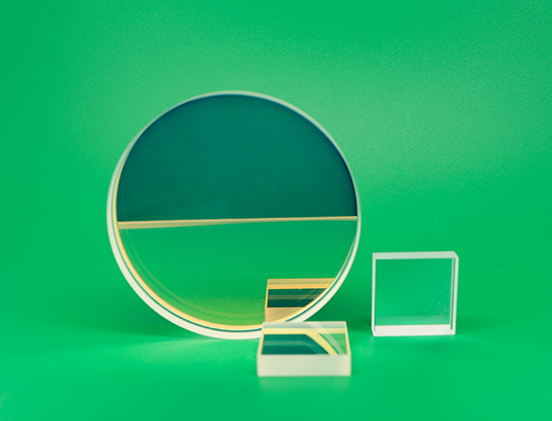Concave and Convex Mirrors: A Simple Guide
Sep. 05, 2024
Key Takeaways
Spherical mirrors, including concave and convex types, feature curved reflective surfaces that form real images by converging parallel rays to a focal point.
- Concave Mirrors: Depending on the position of the object, these mirrors can produce inverted real images. The size of the image varies depending on whether the object is placed at the focal point, between the focal point and the center of curvature.
- Convex Mirrors: These mirrors reflect light in such a way that parallel rays appear to diverge from a virtual focal point, creating upright and reduced-size virtual images.
- Convex mirrors are commonly used for wide-angle viewing, such as in security mirrors, and must meet factory standards including specific diameter tolerances, surface flatness, surface quality, and clear aperture requirements.
Understanding Concave and Convex Mirrors in Spherical Mirrors
Mirrors can have either a flat or a curved surface, leading to two primary types of mirrors: plane mirrors and spherical mirrors. Plane mirrors feature a flat reflective surface that mirrors light without altering the image, adhering to the law of reflection, where the angle of incidence equals the angle of reflection. In contrast, spherical mirrors possess curved reflective surfaces.
Basically, the reflecting surface of the convex mirror bulges outside while the concave mirror bulges inwards. The major difference is the image that forms in these two mirrors. In other words, diminished images form in convex mirrors while enlarged images form in concave mirrors.
Spherical mirrors are further classified into concave and convex types. To fully grasp these classifications, it is crucial to familiarize oneself with a few fundamental concepts.
Pole: The central point on a spherical mirror, located at the midpoint of the reflective surface along the principal axis. It is labeled with the letter “P.”
Center of Curvature: The point on the principal axis of a spherical mirror where it shares the same curvature and tangent. It is represented by the letter “C.”
Radius of Curvature: The distance from the pole of the spherical mirror to the center of curvature, denoted by the letter “R.”
Principal Axis: An imaginary line that extends through both the center of curvature and the pole of the spherical mirror. This line is used as a reference for the mirror's geometric description.
Principal Focus (Focal Point): The location on the principal axis where parallel rays of light either converge (in concave mirrors) or appear to diverge from (in convex mirrors) after reflection. It is marked by the letter “F.”
Focus: A specific point on the principal axis where parallel rays of light either meet or spread out after reflecting, depending on the type of spherical mirror.
Aperture: The diameter of the reflective surface of the mirror, which determines the maximum width of the mirror and is measured perpendicular to the principal axis.
Types of Spherical Mirrors
Concave Mirrors
Concave mirrors are spherical mirrors with an inward-curving reflective surface, resembling the inner surface of a sphere. These mirrors are also known as converging mirrors because they cause light rays to converge upon reflection. The point where parallel rays converge is referred to as the focal point.
Characteristics of Concave Mirrors
The position of an object in relation to a concave mirror affects the characteristics of the resulting image, including its location, orientation, size, and type. Here are the five main scenarios:
1. Object Located Behind the Center of Curvature (C): When the object is placed beyond the Center of Curvature, a real image forms between the Center of Curvature and the Focal Point (F). This image will be inverted and smaller than the object.
2. Object Located at the Center of Curvature (C): If the object is positioned at the Center of Curvature, a real image will form at the same location. This image will be inverted and the same size as the object.
3. Object Located Between the Center of Curvature (C) and the Focal Point (F): When the object is situated between these two points, a real image forms beyond the Center of Curvature. This image will be inverted and larger than the object.
4. Object Located at the Focal Point (F): In this case, no real image forms because the reflected rays are parallel and do not converge. The rays appear to diverge from the focal point behind the mirror, resulting in an image that is considered "at infinity."
5. Object Located in Front of the Focal Point (F): If the object is placed in front of the Focal Point, a virtual image forms behind the mirror. This image will be upright and larger than the object.
Convex Mirrors
Convex mirrors are spherical mirrors with a reflective surface that curves outward, resembling the outer surface of a sphere. These mirrors are also known as diverging mirrors because they cause light rays to spread out upon reflection. The point from which the diverging rays seem to originate is called the virtual focal point.
Characteristics of Convex Mirrors
For convex mirrors, the image is always virtual, upright, and reduced in size, regardless of the object's position in front of the mirror. Unlike concave mirrors, convex mirrors do not have a real focal point. The parallel rays diverge after reflection and do not converge at a specific location. Convex mirrors offer a wide field of view, making them ideal for use in security and surveillance applications.
More Details about Concave Mirrors
The reflective surface of a concave mirror curves inward, focusing light that comes from a specific direction. As light rays strike this curved surface, they converge to form an image.
A concave mirror can produce two types of images based on the object's distance from the mirror. When the object is close to the mirror, it creates a large virtual image. When the object is farther from the mirror, a smaller real image is formed. Concave mirrors are commonly used by dentists for their magnifying properties.
More Details about Convex Mirrors
Convex mirrors, known as diverging mirrors, cause light rays to spread out after reflection. When parallel rays of light hit the mirror's curved surface, they diverge, making the reflected rays appear to originate from a virtual focal point behind the mirror.
Due to their wide field of view, convex mirrors are frequently used in automobile side mirrors, allowing drivers to see more of the rear area. They are also employed in security applications, such as the large, disk-like mirrors installed in stores to provide a broad view of the surroundings.






















